 Facebook
Facebook
 X
X
 Instagram
Instagram
 TikTok
TikTok
 Youtube
Youtube
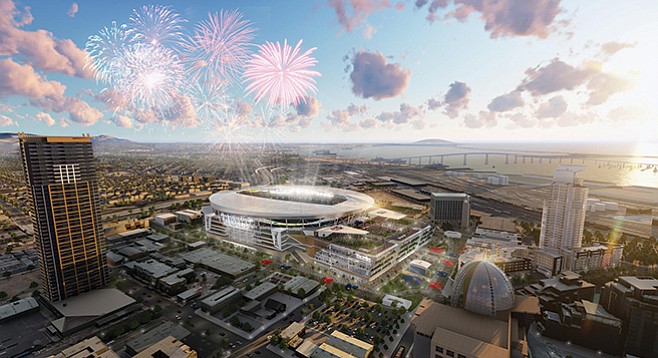
It is comforting to know that the presidential race is not the only wacko thing going on in this country. Voters in McKinney, Texas, have authorized spending $63 million on a new high school football stadium. This tops nearby Allen, Texas, which has a high school stadium worth a mere $60 million, although it seats 18,000 — 6000 more than the McKinney facility will seat.
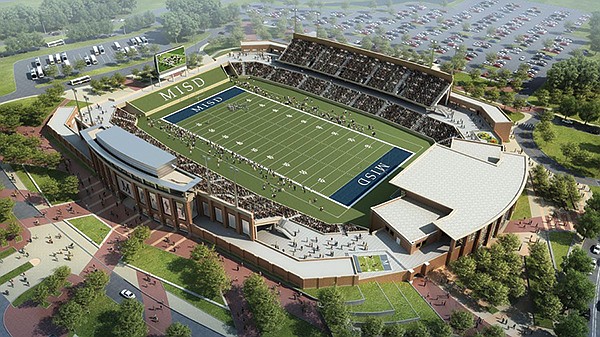
As the voters approved the McKinney stadium, the superintendent of schools, one Rick McDaniel, enthused, “We’re visionaries,” according to fieldofschemes.com. Oh, yes. Call him Doctor Rick McDaniel. He has a doctorate from the University of North Texas. That’s why he knows a visionary when he sees one.
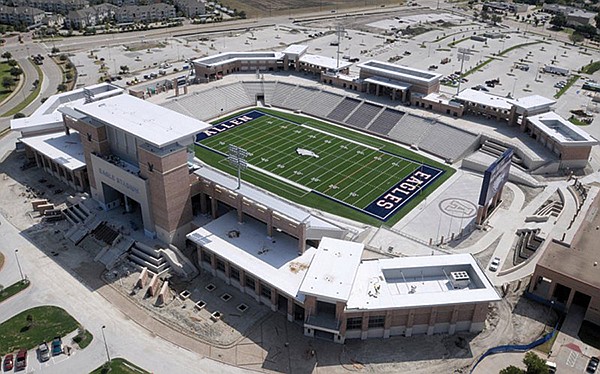
McKinney and Allen are near Dallas. The town of Katy, near Houston, is building a high school stadium that will cost more than $62 million, according to the New York Times.
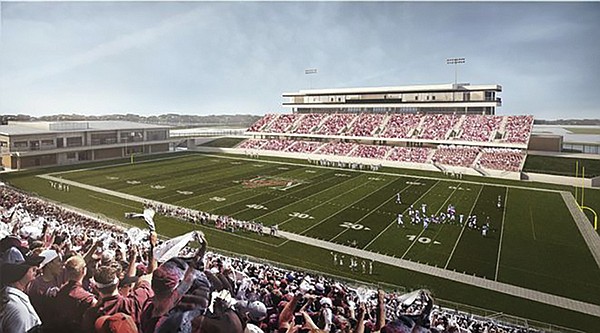
Meanwhile, a new Major League Baseball stadium is likely to go up in Arlington, Texas. The Texas Rangers now play at Globe Life Park. Wails the Fort Worth Star-Telegram, “At 22 years old, Globe Life is getting old, nearly too old.” Oh? The average Major League Baseball stadium is 25 years old, which is disgracefully young, because taxpayers stupidly pay for new stadiums when an older one should be just fine. The new ballpark will be supported through surcharges on sales, hotel, and car rental taxes. If the voters approve, Globe Life Park will be torn down and the space will be used for parking.
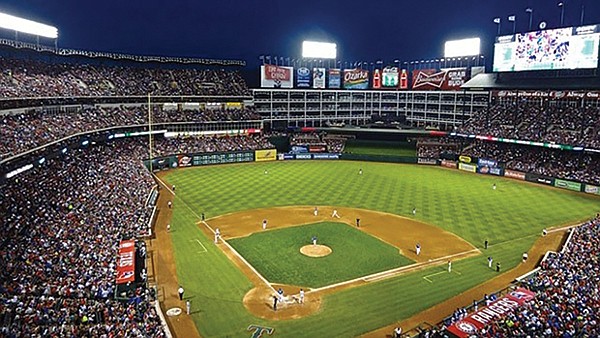
Why should this almost-adolescent, 22-year-old ballpark be put to death? It’s hot in a Texas summer. The new ballpark will have a retractable roof that will be closed in the summer, so the fans can languish in air-conditioned luxury. Announced cost: $1 billion, with the taxpayers paying $500 million and the team $500 million. But that widely advertised 50-50 split is fiction. A local TV station says that in reality, taxpayers could pick up as much as 80 percent of the tab as a result of hidden hanky-panky. Eighty percent is what taxpayers generally pay.
Then there is San Diego. The Chargers football team wants taxpayers to pick up the tab for a so-called convadium — combination convention center and football stadium. As Heywood Sanders, the nation’s expert on convention centers, points out, combined centers and stadiums have not worked well. The space on the floor of the stadium is too small for most conventions. The claim that the stadium can double as a convention center is really a sales pitch so voters will okay a big subsidy.
San Diego’s convadium will be considered an extension of the current center. But that is a bald-faced lie. The convention-center part of the proposed San Diego convadium will not be an expansion of the current center, because it will be five or six blocks away. Convention attendees aren’t likely to walk even a short distance to another building. If it is built, it will be a completely separate facility for different, smaller conventions and meetings, and possibly seldom used.
Only a handful of National Football League teams play in a stadium connected to a convention center. One of those stadiums will be demolished next year and another very possibly will be blown up, maybe soon.
Plans are set for the first implosion, the Georgia Dome. It opened in 1992 and will be closed for business in March of next year and then demolished — at the ripe old age of 25. The owner of the Atlanta Falcons and taxpayers are financing a new stadium. After the implosion, the Georgia Dome land will be used for parking for the new stadium.
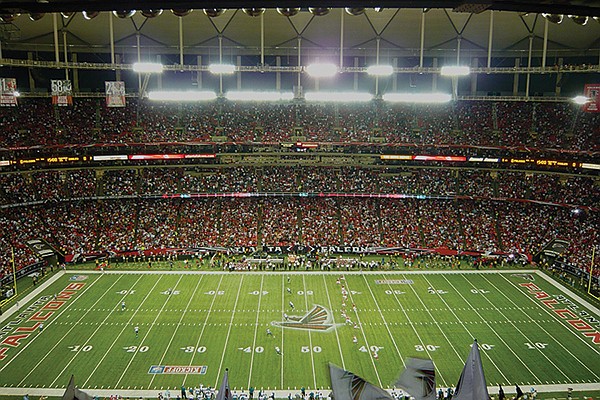
Georgia wants to be Texas. Stadiums barely get into adolescence before they are demolished or deserted. Turner Field was built in 1996 for the Summer Olympics. The baseball Braves moved into it in 1997. The team leases the stadium from two local governmental bodies. But the ballpark is now 20 years old, and the Braves want a new, fancy façade. Next year, the team, with a fat subsidy from government, will move into a new SunTrust Park away from downtown.
Then there is a lonely — but youthful — domed stadium in St. Louis. “Demolish the Dome? Convention officials contemplate it,” blared a St. Louis Post-Dispatch headline in February. The St. Louis Rams football team will be performing this upcoming season in Los Angeles, where it played for many years. Missourians tried to offer a deal to get the team to stay, but there wasn’t a chance of that.
This makes the second time St. Louis has been cuckolded by an NFL team. The Cardinals departed for Phoenix in 1988. St. Louis wanted a football team so desperately that in 1995 it built a domed stadium with 100 percent taxpayer funding without a team tenant.
St. Louis city fathers wooed the Los Angeles Rams, who couldn’t wangle a stadium subsidy in Southern California. So, the team moved to St. Louis with an incredibly juicy deal. Stupidly, St. Louis promised that the domed stadium would be kept in the top tier of NFL facilities — forever state-of-the-art. But with new and renovated stadiums sprouting up in one NFL city after another, St. Louis could hardly remain top tier. So the Rams are departing.
The stadium, sometimes used for smaller get-togethers and attached to a larger convention center, could get demolished or partially demolished. The stadium is now called the Dome at America’s Center Convention Complex, one of four entities under one roof. The stadium could be used for other events, but it may make more economic sense to knock it down and use the space to enlarge the adjoining convention center.
“It’s still very much up in the air,” says Heywood Sanders. “There is no financing mechanism for a convention-center expansion. Local politicians are not rushing to embrace it. Local media have not done the standard [puff pieces] on it,” he says, pointing to skeptical stories in the Post-Dispatch.
St. Louis is sadder and wiser in one sense: most citizens don’t want to be shafted by the NFL again. But it will be a repeat loser if it spends a bundle of bucks on expanding its convention center. Fewer than 5 percent of convention centers bring in enough income to cover expenses, says Sanders. Convention centers exist to subsidize hotels and restaurants, and the taxpayers lose. This will get worse as attendance continues to fall and centers continue to expand.


It is comforting to know that the presidential race is not the only wacko thing going on in this country. Voters in McKinney, Texas, have authorized spending $63 million on a new high school football stadium. This tops nearby Allen, Texas, which has a high school stadium worth a mere $60 million, although it seats 18,000 — 6000 more than the McKinney facility will seat.

As the voters approved the McKinney stadium, the superintendent of schools, one Rick McDaniel, enthused, “We’re visionaries,” according to fieldofschemes.com. Oh, yes. Call him Doctor Rick McDaniel. He has a doctorate from the University of North Texas. That’s why he knows a visionary when he sees one.

McKinney and Allen are near Dallas. The town of Katy, near Houston, is building a high school stadium that will cost more than $62 million, according to the New York Times.

Meanwhile, a new Major League Baseball stadium is likely to go up in Arlington, Texas. The Texas Rangers now play at Globe Life Park. Wails the Fort Worth Star-Telegram, “At 22 years old, Globe Life is getting old, nearly too old.” Oh? The average Major League Baseball stadium is 25 years old, which is disgracefully young, because taxpayers stupidly pay for new stadiums when an older one should be just fine. The new ballpark will be supported through surcharges on sales, hotel, and car rental taxes. If the voters approve, Globe Life Park will be torn down and the space will be used for parking.

Why should this almost-adolescent, 22-year-old ballpark be put to death? It’s hot in a Texas summer. The new ballpark will have a retractable roof that will be closed in the summer, so the fans can languish in air-conditioned luxury. Announced cost: $1 billion, with the taxpayers paying $500 million and the team $500 million. But that widely advertised 50-50 split is fiction. A local TV station says that in reality, taxpayers could pick up as much as 80 percent of the tab as a result of hidden hanky-panky. Eighty percent is what taxpayers generally pay.
Then there is San Diego. The Chargers football team wants taxpayers to pick up the tab for a so-called convadium — combination convention center and football stadium. As Heywood Sanders, the nation’s expert on convention centers, points out, combined centers and stadiums have not worked well. The space on the floor of the stadium is too small for most conventions. The claim that the stadium can double as a convention center is really a sales pitch so voters will okay a big subsidy.
San Diego’s convadium will be considered an extension of the current center. But that is a bald-faced lie. The convention-center part of the proposed San Diego convadium will not be an expansion of the current center, because it will be five or six blocks away. Convention attendees aren’t likely to walk even a short distance to another building. If it is built, it will be a completely separate facility for different, smaller conventions and meetings, and possibly seldom used.
Only a handful of National Football League teams play in a stadium connected to a convention center. One of those stadiums will be demolished next year and another very possibly will be blown up, maybe soon.
Plans are set for the first implosion, the Georgia Dome. It opened in 1992 and will be closed for business in March of next year and then demolished — at the ripe old age of 25. The owner of the Atlanta Falcons and taxpayers are financing a new stadium. After the implosion, the Georgia Dome land will be used for parking for the new stadium.

Georgia wants to be Texas. Stadiums barely get into adolescence before they are demolished or deserted. Turner Field was built in 1996 for the Summer Olympics. The baseball Braves moved into it in 1997. The team leases the stadium from two local governmental bodies. But the ballpark is now 20 years old, and the Braves want a new, fancy façade. Next year, the team, with a fat subsidy from government, will move into a new SunTrust Park away from downtown.
Then there is a lonely — but youthful — domed stadium in St. Louis. “Demolish the Dome? Convention officials contemplate it,” blared a St. Louis Post-Dispatch headline in February. The St. Louis Rams football team will be performing this upcoming season in Los Angeles, where it played for many years. Missourians tried to offer a deal to get the team to stay, but there wasn’t a chance of that.
This makes the second time St. Louis has been cuckolded by an NFL team. The Cardinals departed for Phoenix in 1988. St. Louis wanted a football team so desperately that in 1995 it built a domed stadium with 100 percent taxpayer funding without a team tenant.
St. Louis city fathers wooed the Los Angeles Rams, who couldn’t wangle a stadium subsidy in Southern California. So, the team moved to St. Louis with an incredibly juicy deal. Stupidly, St. Louis promised that the domed stadium would be kept in the top tier of NFL facilities — forever state-of-the-art. But with new and renovated stadiums sprouting up in one NFL city after another, St. Louis could hardly remain top tier. So the Rams are departing.
The stadium, sometimes used for smaller get-togethers and attached to a larger convention center, could get demolished or partially demolished. The stadium is now called the Dome at America’s Center Convention Complex, one of four entities under one roof. The stadium could be used for other events, but it may make more economic sense to knock it down and use the space to enlarge the adjoining convention center.
“It’s still very much up in the air,” says Heywood Sanders. “There is no financing mechanism for a convention-center expansion. Local politicians are not rushing to embrace it. Local media have not done the standard [puff pieces] on it,” he says, pointing to skeptical stories in the Post-Dispatch.
St. Louis is sadder and wiser in one sense: most citizens don’t want to be shafted by the NFL again. But it will be a repeat loser if it spends a bundle of bucks on expanding its convention center. Fewer than 5 percent of convention centers bring in enough income to cover expenses, says Sanders. Convention centers exist to subsidize hotels and restaurants, and the taxpayers lose. This will get worse as attendance continues to fall and centers continue to expand.
Comments